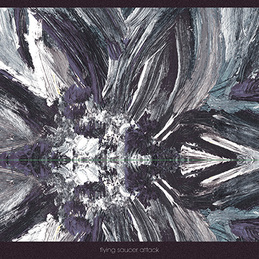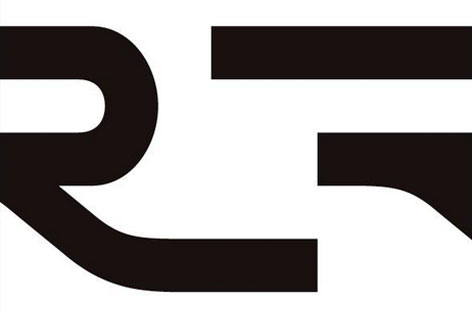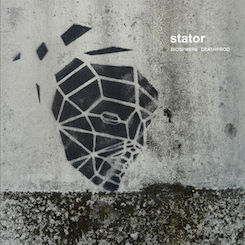News & Events

The enigmatic Amara Touré from Guinée Conakry finally getting a well deserved compilation showcasing all of the 10 songs ever released between 1973 and 1980. Cuban-influenced music of a different kind featuring amazing spaced-out guitar works!!
If Touré's intention was to create the most sensual music ever recorded in Africa, he might very well have reached this goal. The musicians on the recording sound like they are playing in a smokey, poorly lit juke joint, where dark rum was sipped ever so slowly, and the pulse of the music took up a life of its own. How many couples have danced, swayed, and melted together to the distinct sound of Amara Touré? Nobody can say for sure...
It took only ten songs for Amara Touré to become a legend. These ten treasures, representing Touré ́s complete discography, have been carefully re-mastered from original session tapes and vinyl records, and will be released by Analog Africa on 22 June 2015.
After the release of his LP in 1980, Touré seems to have disappeared. Apparently he was last seen in Cameroon but it is unknown if he is still alive today. His music though is definitely alive.
More information can be found here.

Hermetically sealed and reveling in tumult, All Tense Now Lax is the most significant and developed work yet forged by Liberez. Based in main orchestrator John Hannon's remote studio No Recordings in Rayleigh, England, Liberez have expanded their palette from previous outings on Alter to produce a perfectly engineered machine that consumes the beholder.
A tense, gut-wrenching listen wrought with carefully considered space, the range of techniques and the depth of atmosphere is staggering. All Tense Now Lax never settles on a simple depiction of dread, foreboding or anxiety but layers textures upon rhythms to produce towering minarets of conflicting emotion. _Захвална породица (translated "Grateful Family") is a case in point: Hannon's wailing violin is torn across collaborator Nina Bosnic's lyric, while a loping beat is crushed with distortion. Indeed, a more pronounced focus on rhythm and movement on Liberez' 3rd album is perhaps what sets it apart from previous work. Centerpiece "Grease The Axles" showcases Hannon's technique of detourning from other cultures to dramatically altered effect. A lopsided rhythm and scraped violin are torn to breaking point: what starts off as a Moondog-esque tap at a train station ends with the train in flames. Liberez' brutality is not as literal as this all the time: on "How Much For Your Brother" an aggressively over-driven vocal loop is hammered into the stereo field by primitive percussion courtesy of drummer Pete Wilkins, but the overall effect is one of movement and hypnosis. A Rebetika melting into night- terror. The title track, meanwhile, presents a premature eulogy, coming halfway through what is an all-consuming album of frightening power.
John Hannon's breadth of technical mastery on All Tense Now Lax is never fully revealed in an ostentatious way. Instead the album is allowed to breathe and evolve, with field recordings, industrial patterns and alienated instrumentation woven together seamlessly. A tumultuous experience which transports rather than grounds the participant.
Out July 24 on LP and CD.
More information can be found here.

Flying Saucer Attack release Instrumentals 2015, their first album in 15 years on Friday the 17th of July 2015. Comprised of 15 fresh David Pearce solo performances recorded in characteristically lo-fi manner at home, using guitars only on tape and CD-R, Instrumentals 2015 is an album that will appeal both to FSA diehards and those wholly unfamiliar with the outfit's recorded output.
The 15 tracks on Instrumentals 2015 present an impressionistic narrative which transports the listener through the excoriating dronescapes and rueful introspection of the album's early pieces to the more redemptive cadences of its closing half. Given its sense of momentum, maintained through Pearce's thoughtful sequencing, this is an album that should be experienced in its entirety, the better to appreciate its deliberate emotional arc.
More information can be found here.

The trajectory of Alex Cobb's music over the course of the last decade could be viewed as a distillation of tone and atmosphere to arrive at Chantepleure, his most optimistic and sanguine musical statement to date. The album, however, was created at a time of heartache, isolation and emotional upheaval and acts as a balm of tender tones where abstract guitar lines circle and suspend in a kind of refined elegance. Noise, once a hallmark of Cobb’s music, has not been entirely removed, but manifests here in a different form.
A delicate dissonance shades the edges of the these four tracks, providing textural color and gorgeously offsetting the lush nature of the music. Even in short spans, this approach yields substantial results. At three and a half minutes, “Disporting with a Shadow” pulls back the curtain just enough to let flecks of natural guitar notes and traces of alluring melody seep into the mix. The album closes with the side-long “Path of Appearance,” a cathartic composition that is best described as a poem of overtones which, like the rest of the album, is sourced from electric guitar and minimal effects but feels more akin to the sun stretching to fill all corners of a darkened room. A testament to sonic refinement, a way of coping, an exciting step forward for an established artist—the minimalist Chantepleure is all of these things.
More information can be found here.

"I traced
the convolutions of
turf, laid out by men,
& made new windings with the mole
through undisturbed
barrows."
(Ronald Johnson, "The Book of the Green Man")
Belated Movements for an Unsanctioned Exhumation August 1st 1984 is Richard Skelton's second album as The Inward Circles, following 2014's Nimrod is Lost in Orion and Osyris in the Doggestarre. If his previous offering hovered "between the empyreal and the subterranean," Belated Movements is resolutely earthbound, beginning at ground level and slowly moving ever downward. The title is a reference to "Lindow Man," one of many bog bodies discovered in northern Europe in the twentieth century, and continues an archaeological theme which first surfaced in his 2013 *AR collaboration with Autumn Richardson, entitled Succession. In particular, it is the last composition from that album, Relics, which can now be seen as starting point for much of Skelton's future work as The Inward Circles. But whereas Relics dealt with the pollen remnants submerged beneath tarns in the remote Cumbrian uplands, Buried Movements evokes a distinctly funerary landscape.
The first piece, "Petition for Reinterment" begins in familiar terrain - a slow, solemn string elegy - but it gently begins to disintegrate, to distend and rot, as if the music itself is being subsumed in soil and subjected to the natural cycles of decay and renewal. It is interesting to note that, whilst the skin of bog-bodies is often very well preserved, the bones undergo a process of decalcification - they literally dissolve from within. But exhumations such as "Lindow Man" are now artificially preserved behind museum glass, removed from time, from earthly contact and the inexorable progress of nature itself.
By contrast, the music of Belated Movements continues its inner transformation, and "To Your Fox-Skin Chorus" divulges more of its innards, revealing hitherto unheard melodic, rhythmic and textural material. The reference to fox-skin, borrowed from Edmund Gosse, alludes to the fox-fur arm-covering found on "Lindow Man," and, more obliquely, to the fox as a psychopomp - a soul guide - which formed a central theme in Skelton's recent Feræ Naturæ book and exhibition.
The album concludes with a further downward delving to the bones of animals long made extinct in England by humans: the wolf, lynx and bear - animals that haunt the popular imagination. Here the music is at its most restless and forbidding, as it ends with an urgent call - Canis, Lynx, Ursus: Awake, Arise, Reclaim. There is a palpable sense, with its almost unbearable crescendo, of a rising up, a return to the surface, and a threatening quiet.
BELATED MOVEMENTS FOR AN UNSANCTIONED EXHUMATION AUGUST 1ST 1984
by The Inward Circles
1. Petition for Reinterment
2. To Your Fox-Skin Chorus
3. Canis, Lynx, Ursus: Awake, Arise, Reclaim
Total Running Time : 60mins
More information can be found here.

Backwards is very happy to announce the NEW My Cat Is An Alien studio double-album!
From the extended foreword insert by David Keenan: "What are we to make of My Cat Is An Alien, the duo of the brothers Roberto and Maurizio Opalio, titling this new extended sound work The Dance Of Oneirism? [...] None of the tracks have titles; instead we feel our way by number, by movement. Our co-ordinates are fixed, or more properly suggested, by the listing of instruments. Self-made double-bodied string instrument, handmade pocket harp, pedal effects, wordless vocalizations, modified analog drum machine, mini-keyboard, alientronics. But even here nothing is straightforward; everything is invented, shrunken, self-built, inchoate: alien-ated. The session was recorded – instantly composed – in MCIAA's "Alien Zone," situated in the Western Alps, and it sounds it. The central fact of MCIAA's music has always been space but they have never sounded quite so far away, so removed. [...] The music is extremely sensual. The rhythms have a contrary cold/organic quality to them, the feel of the pulse as the breath is held, but soon even that dies down and we are left with an extended, timeless moment, the space between one breath and the next. Occasionally there is the sound of strings, strange steel resonances that populate the music like ghosts, the ghosts of Roscoe Holcomb's high, lonesome sound, of Dock Boggs and the sanctified steel of Washington Phillips. Ash Ra Tempel met Timothy Leary in the Alps [...] The transmissions are fuzzy up here and at points it makes for a music of almost terrifying quiet. It is minimal, sure, but MCIAA are not so much interested in repetition as in eternal expansion. [...] The Dance Of Oneirism is a music of unknowing, a dance with a phantom, the letting go of a dream. It is MCIAA's greatest long form work. It has tributaries that run deep into the past, ghost channels that facilitate two-way travel, even as its destination, in the words of the late Conrad Schnitzler, is determinedly future, future, future." - David Keenan
Includes a photographic Art Book by Roberto Opalio. Silkscreened image by the artist on Side D. In first 80 copies LP1 and LP2 come each in different colours.
More information is available here.

ÜTOPIYA? not only continues Oiseaux-Tempête's first album, but it extends it. The travels move this time to Istanbul and Sicily providing the food for its urgent energy and indomitable drive. While the structures still hint at moments of post-rock, they go further now, almost into the area of free-jazz yet without losing a directness rooted in punk (highlighted perhaps by the presence of G.W.Sok from The Ex). In addition, the bass clarinet of Gareth Davis references both the roughest of experiments of Akosh Szelevényi and of The Stooges Fun House.
More information can be found here.

After a break of 5 years, Alva Noto continues his "Xerrox" series with Xerrox Vol. 3, entitled "Towards Space," a journey that started with Xerrox Vol. 1, referring to the "old world," and Xerrox Vol. 2, heading "to the new world."
Using the process of copying as a basis, the "Xerrox" series deals with the manipulation of data by means of endless reproduction. due to the inherent vice of the procedure that becomes especially visible when copies are made from copies, everyday sounds are so much altered that they can be hardly associated with the source material anymore. as a result, entirely new sounds are created that, being copies of originals, become originals themselves.
On Xerrox Vol. 3, a new aspect enters the scene. inspired by childhood film memories from the 1970s including Tarkovsky‘s adaption of Solaris and La Isla Misteriosa y el Capitán Nemo based on Jules Verne's "The Mysterious Island," the record shows Alva Noto's private side. with its very intimate atmosphere, it is a personal reflection of dreams, an imaginary journey through emotional landscapes or, as he himself puts it, a "cinematographic emotion of a soundtrack to a film that actually does not exist in reality."
Alva Noto himself further states, "I see Xerrox Vol. 3 as my most personal album so far. I have to admit that this emotional output is a surprise even for myself. it remains exciting how the last two albums of this series will sound like."
More information can be found here.

When Daniel O'Sullivan was invited to curate the sixth installment of Transmissions Festival in Ravenna in 2013, his first request was for Charlemagne Palestine, the shamanic world-maker and sacred toy emissary associated with the New York, '60's minimalist scene and one-time student of Pandit Pran Nath. Palestine is known primarily for extended performances with Bösendorfer piano, cathedral organs and falsetto voice, but has also exhibited his visual work internationally. After Transmissions, O'Sullivan invited Palestine to play a two-night residency at Cafe Oto, the second night of which was a collaboration with Grumbling Fur, the duo of O'Sullivan and Alexander Tucker.
The performance at Oto was a ritualistic union of crystalware, processed strings, live tape-manipulations, Indian harmonium, shimmering piano clusters, bleating cattle, a Japanese orgy, disembodied vocal harmony and rousing choruses often led by sing-a-ma-jigs (singing Fisher-Price toys affectionately referred to as "the singing assholes"). A continuous flow of overtones and plainchant sieved through mutant simulations of processed pulses, orbiting strings and heliotropic vocal mantras.
Following their recent critically acclaimed avant-pop albums Glynnaestra (Thrill Jockey) and Preternaturals (The Quietus), this is the first incarnation of the Grumbling Fur alter-ego "Time Machine Orchestra," an alias put together to explore extended drone works, improvisation and automatic composition.
More information can be found here.

stator (ˈsteɪtə) n
1. (Electrical Engineering) The stationary part of a rotary machine or device, esp of a motor or generator
2. (Aeronautics) A system of nonrotating radially arranged parts within a rotating assembly, esp the fixed blades of an axial flow compressor in a gas turbine
[C20: from Latin: one who stands (by), from stāre to stand]
Biosphere is the main recording name of Geir Jenssen, a Norwegian musician who has released a notable catalogue of ambient electronic music.
He is well known for his "ambient techno" and "arctic ambient" styles, his use of music loops, and peculiar samples from sci-fi sources.
His track "Novelty Waves" was used for the 1995 campaign of Levi's. His 1997 album Substrata is generally seen as one of the all-time classic ambient albums.
He has been working with Touch since 1999.
Deathprod is a musical pseudonym used by Norwegian artist Helge Sten. Sten began creating music under this name starting in 1991, culminating with a box set of most of his recorded work being released in 2004. Simply titled Deathprod, the collection contains three albums along with a bonus disc of previously unreleased, rare, and deleted tracks.
On recordings, Sten is usually credited with "Audio Virus," a catch-all term for "homemade electronics, old tape echo machines, ring modulators, filters, theremins, samplers and lots of electronic stuff."
Sten is a member of Supersilent and works as a producer on many releases on the Norwegian label Rune Grammofon. He has also produced Motorpsycho and has worked with Biosphere on an Arne Nordheim tribute album called Nordheim Transformed.
More information can be found here.

